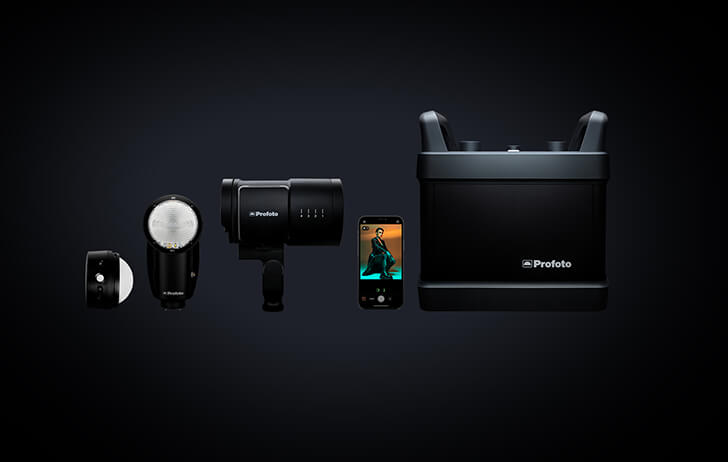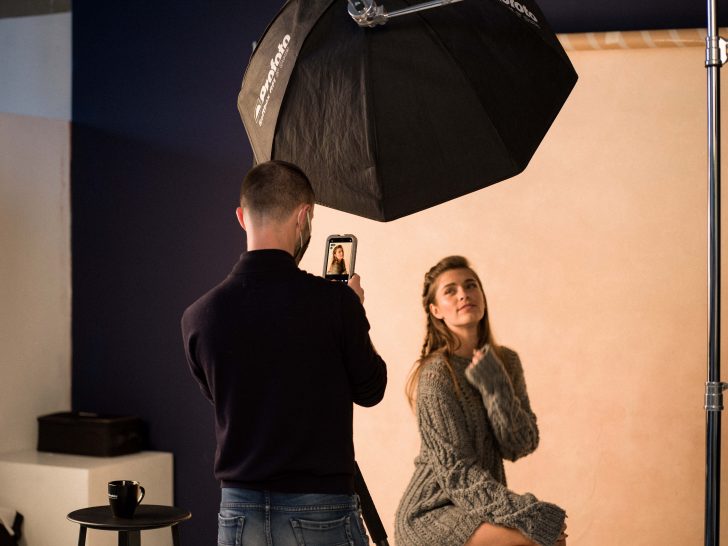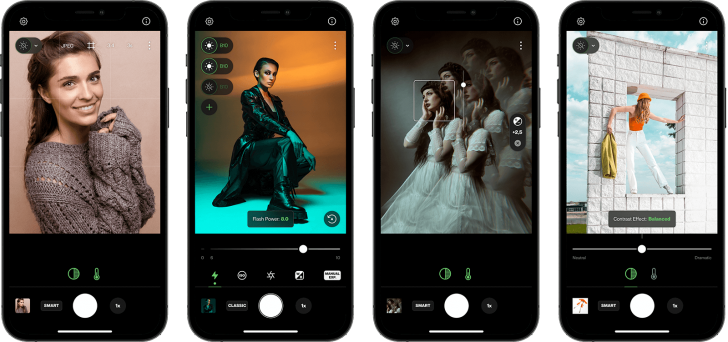Smartphone manufacturers have changed the way consumers photograph. But what they are missing is the ability to capture great light. With the launch of Profoto Camera, professional photographers get access to the full range of Profoto’s flashes that seamlessly integrate with the first professional smartphone camera. Starting today, photographers have the freedom to choose between two distinct modes, smart and classic, and can now shoot in Profoto RAW format.
The Profoto Camera stands on three pillars of innovation that together deliver a flawless user experience. Profoto’s AirX technology, the world’s first solution to enable a seamless integration of professional flash and smartphones. Profoto RAW, enabling files with 5–8 times more information than JPEG, leading to higher quality, significantly more details, and greater editing possibilities. And finally, the two modes: Classic mode allows you to either manually adjust exposure and flash settings or to use AirX Smart-TTL, the new automatic exposure algorithm. Smart mode lets you choose between a set of smart contrast and warmth effects with the swipe of a finger, enabling seamless integration with the use of flash to capture professional images instantly.
“I always have my iPhone with me, and now with the Profoto Camera, I can shoot everywhere with the same gear I use in my studio. The Profoto Camera is really intuitive and easy to use and having the option to have full manual control with my iPhone and Profoto lights is perfect for creating professional photos anywhere, at any time.” says photographer Pierre-Edouard Saillard.
At Profoto, light is at the heart of every innovation and a pioneer in the professional flash segment, Profoto considers the freedom of connectivity to be the next big step for professional photography. With the new Profoto Camera app, Profoto reaches a major milestone in setting photographers free to choose their capturing device – whether it is a smartphone, DSLR, or mirrorless camera – without sacrificing the ability to shape light.
“Although modern smartphones will continue to make technological advancements, improved computational power or better optics will never replicate the key to every image, the light. This is why we created this new Profoto Camera app, that seamlessly integrates smartphones and professional flash. From now on, professional photographers can shoot with any capturing device without missing out on the full power of flash.” says Anders Hedebark, Profoto’s CEO.
The Profoto Camera app is out now in App Store and Google Play Store.




I see lots of indoor pictures that look like they were shot with the color temperature set too high in the camera (i.e., the picture has an orange cast).
I was thinking that ProPHoto had released their own phone....with camera of course.
:)
The beauty of a smartphone camera is that it is a self-contained system in my pocket.
Camera phones and the computational routines they use seem to be optimized for the worst possible lighting scenarios.
It might become the norm someday, but it shouldn't.
I think of it like post processing image and video. For power users the tools that require precise results, efficiency and so on exist and then the goal is more personal control over the output at the cost of increased user knowledge and learning required. For those who don't want to learn retouching photos properly in photoshop then instagram filters may be good enough and serve a purpose. Whilst editing content in davinci resolve or premiere for likes of those of us on here is suitable for us, I have friends who just want to do basic good enough adjustments to gopro or phone footage and it's too steep a learning curve for them going that route thus using automated 1click=done tools that produce lesser results is better for them.
In the end those are tools. Everyone have to decide which tools are sufficient for the work that needs to be done.